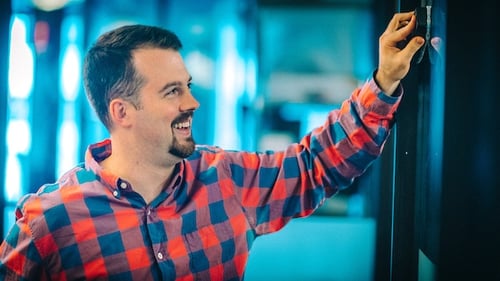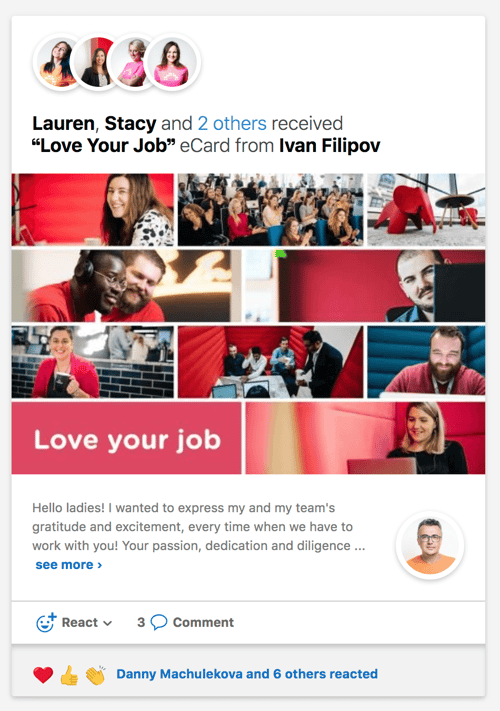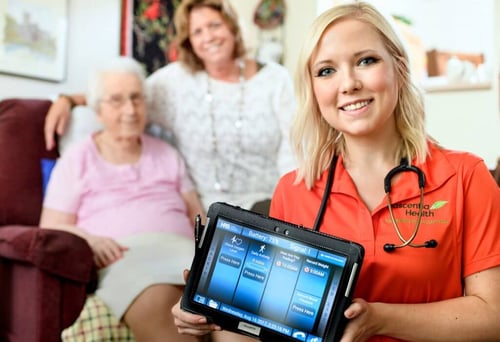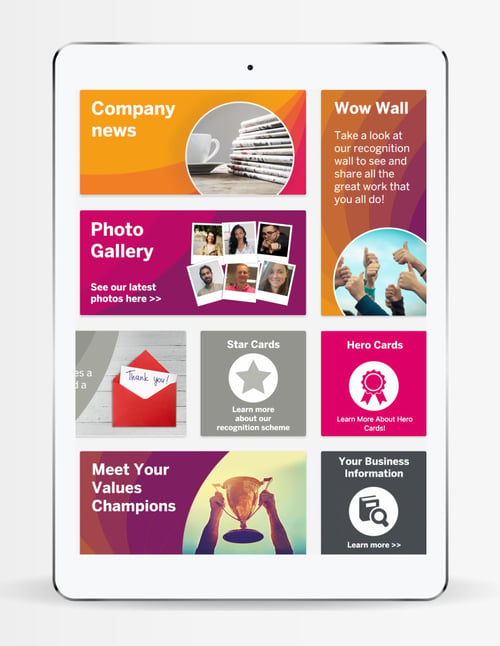
7 min read
I have one of those “big” birthdays this year. You know them, the kind that ends in a “0,” and makes you take a step back and question if what you’ve done all these years was worthwhile. And, even more important, makes you look into the future to decide what you want to achieve next, and what you need to do to prepare for it.
I’m mentioning this because I strongly believe that the same approach should be taken when it comes to recognition strategy and programs, evaluating and setting them up to support and drive your business to be successful today and in the future.
To help you with this, in this blog I’ve borrowed from some of the key business future-proofing concepts. By applying them to your recognition programs, you’ll ensure they’re strong, solid and can withstand any future challenges.

1. Develop strong branding
The starting point is to develop strong branding for your recognition program. Just like a business, that relies on branding to attract and retain its customers, we likewise should create recognition branding that is memorable and recognizable to our employees – drawing them into our “product” and making employees want to engage with it time and time again.
This is an area you can really have fun with, and I’ve seen many companies get clever with branding, through naming employee recognition programs and choosing images that would make any marketing team jealous with their creativity. The key here is to put in place branding that has legs to stand on, so it will be able to be used for multiple years, and not something that will need to be changed a year later.Download our highlight for a step-by-step guide to building an employee recognition program »
An example of this is the branding created for the recognition program we designed for our employees at Reward Gateway. The strong branding was created by using images, which were fun emojis, and also through the names selected for each plan, which evoke an immediate understanding of what they’re all about. I mean, can’t you just picture employees giving each other virtual high fives as they use the peer-to-peer “High Five” eCards?

2. Create a consistent experience
Another thing that businesses do well is to create a consistent experience for their customers so that they can easily (and frequently) engage with the company’s product time and time again.
The same should be done with our recognition programs by creating a recognition experience that is seamless and consistent, so employees can easily use it over and over again. Too often the design is either not thought through or is put together in haste, which results in employees trying it once, finding it clunky and disengaging with the program no matter how often you tell them how great and important it is.
One of our clients, Nascentia Health, a healthcare provider based out of Syracuse, NY understands how important manager-led recognition is to improve employee engagement. The organization ensures that employees are continuously engaging with and using the platform, while truly living the newly-defined company values of “Be a Team Player, Be an Example of Service Excellence, Be Accountable and Be Knowledgeable” each day.
 Source: Nascentia Health
Source: Nascentia Health
To set the stage, drive recognition expectations and create a culture of appreciation, managers have set a goal to share at least one recognition moment each month and talk about examples of how and where employees live their values in meetings.
In the past six months, 86% of managers have consistently written more than nine recognition posts.
During one-on-one manager reviews, employees and managers discuss overall their performance and analyze their recognition activity together on the employee recognition platform, named Be Nascentia. They take a deeper dive into:
- How many people have recognized them that month
- What the recognition message said
- How they recognize others at the organization
One individual in particular, Mary Kate Rolf, the CEO of Nascentia Health, is a true example of driving the recognition culture forward. In the past six months, she has written 110 recognition posts which have been shared company-wide to increase visibility and participation to create a consistent experience. She’s an example of not only stellar recognition habits, but also shines a light on the importance of your getting your leaders on board, especially your CEO!
 Nascentia Health CEO, Mary Kate Rolf
Nascentia Health CEO, Mary Kate Rolf
3. Continually paint your “bridge”
My next tip comes from the British expression “like painting the Forth Bridge,” which refers to an unending task. The story goes that the painters of this long bridge in Edinburgh were never done, for once they’d finished painting it, they had to immediately start over again.
This is an important business concept, with businesses understanding that if they want to continue to be successful they need to start working on refreshing or adding to their product over and over again.
The reason I mention this is that too often we create recognition programs and then move on to our next project, leaving the “paint” to fade.
Like bridge painters or product developers in the business world, we need to similarly have an endless quest for the improvement of our recognition programs. It not only ensures that the “paint” is fresh, but it brings our employees back to our programs with new and interesting changes.

4. Don’t get stuck in the past
While that fresh coat of paint is important, another way to future-proof your program is to make sure it’s adaptable. You need to constantly ensure that you’re not getting stuck with old ways of doing recognition, that just won’t work with your new business objectives or in this new world of work.
A great example of this is what NAHL did with its recognition program. The organization decided to do a complete review of the program, taking a step back to make sure that it aligned with what its business and what employees needed now and in the future.

The organization bravely ditched its long service program along with two others that just weren’t meeting its needs, and moved to ones that were driven by its values, and were more visible, collaborative and cost effective.
5. Don’t depend on one part of your business
This leaves me with the last of my five tips, which is that you should not depend on only one recognition plan within your overall program. Businesses do this by introducing and maintaining a diverse product portfolio, reducing the risk and dependence on one part of business and the same approach should be done with your recognition program.

To illustrate this, let me take you back to the Reward Gateway recognition program I mentioned earlier. It was designed using the “pyramid approach,” which is an approach I’ve used many times to help me design recognition “products” which are delivered in different ways and at different times, so not relying on one to do it all. You can read more about this in a blog I wrote explaining how we used this to build our employee recognition pyramid starting with peer-to-peer recognition.
Malcolm X once said, “The future belongs to those who prepare for it today.” If you take these tips and put them into action, you’ll be one step closer to preparing your recognition program for its own future, with an effect that will last for years to come. Stay tuned for part two!

 Debra Corey
Debra Corey



